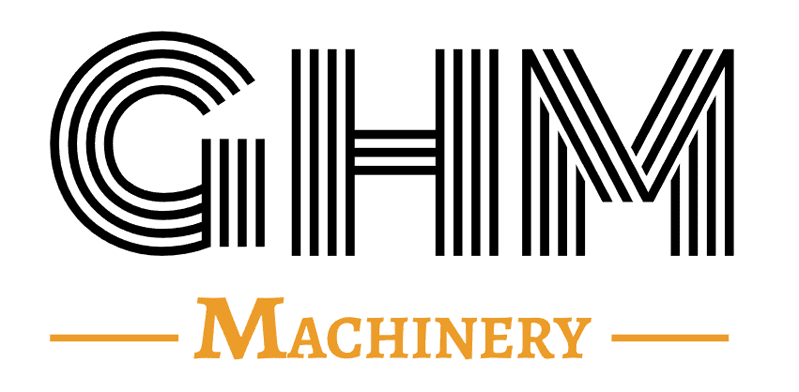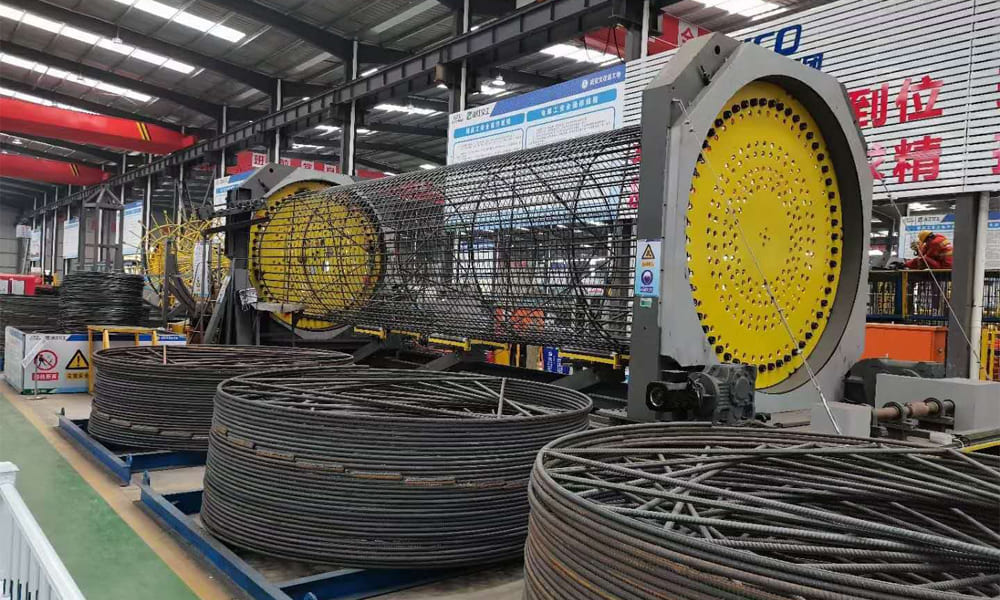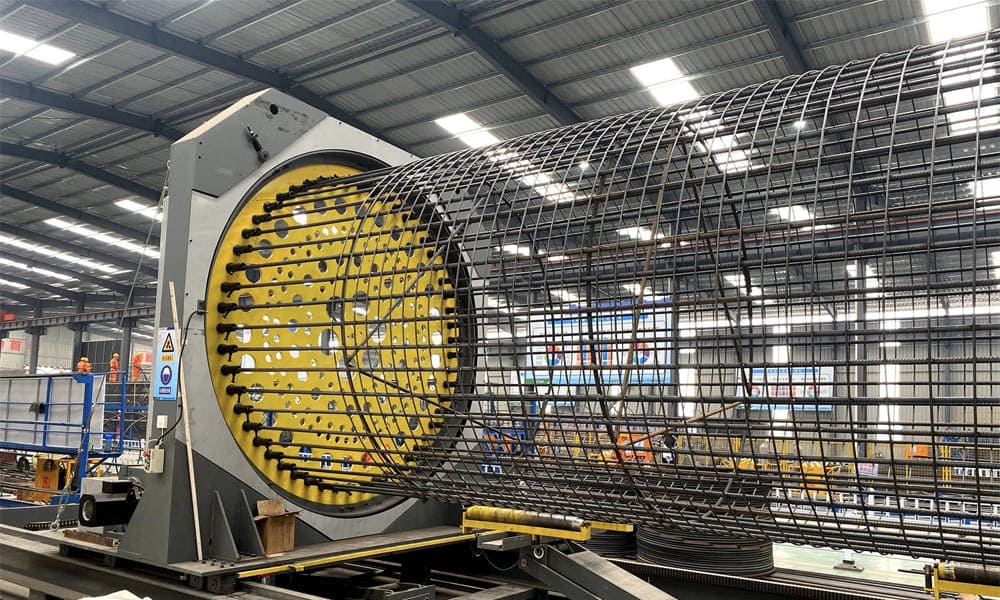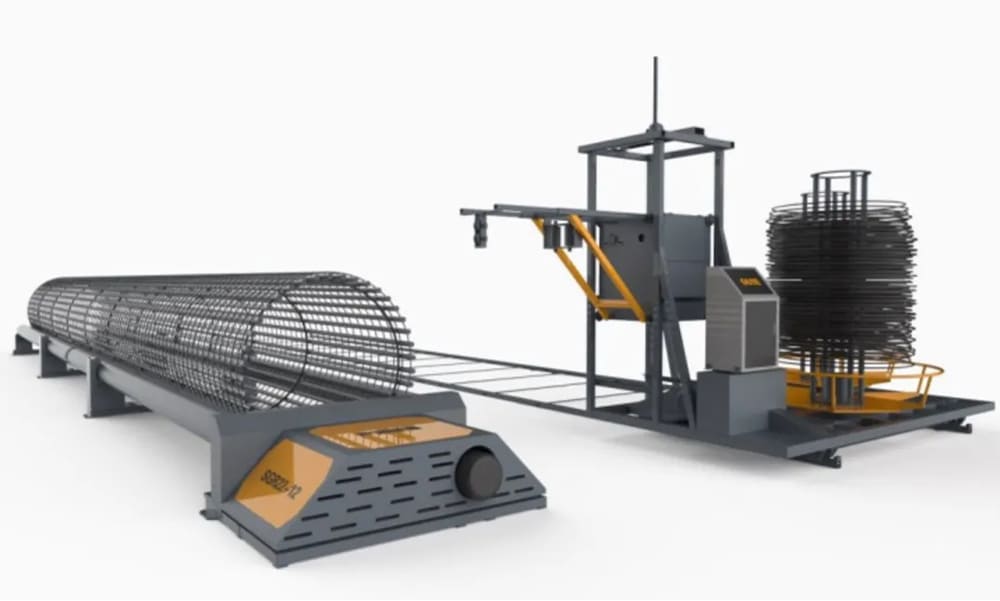Introduction
Reinforcement cages have a wide range of applications in the field of construction and engineering. It is used for a variety of purposes, such as reinforcing concrete structures, supporting soil, and fixing stones. This article will introduce the manufacturing method of a steel cage to help readers understand how to make a strong and durable steel cage.
Preparation of production materials
- Reinforcing bar: Choose a rebar with the right diameter, and the commonly used specifications are φ6, φ8, φ10, etc.
- Iron wire: Iron wire used to bundle steel bars, generally choose iron wire with a diameter of 1.5mm to 2mm.
- Tools: basic hand tools such as rebar shears, wire shears, pliers, etc.
- Optional materials: plastic film, tape, etc., for protecting the steel cage.
Step-by-Step Guide: How to Make a Reinforcement Cage
Creating a reinforcement cage is an essential step in construction, providing stability and strength to the structure. In this article, we’ll walk you through the detailed process of making a sturdy and reliable steel cage, covering everything from design to maintenance. Follow these steps to ensure a quality outcome.
1. Design the Size and Shape of the Reinforcement Cage
The first step is to determine the size and shape of the reinforcement cage based on the project’s requirements and usage scenarios.
- Create a CAD Design or Sketch: Use CAD software for precise dimensions and specifications or hand-draw a sketch for a more straightforward project.
- Consider Reinforcement Needs: Adjust the design to match the structural requirements, ensuring the cage can handle the intended loads.
2. Cut the Rebar to Length
After finalizing the design, cut the rebar to the required lengths.
- Use Rebar Shears: Employ high-quality rebar shears for smooth and precise cuts.
- Account for Extra Length: Cut the rebar slightly longer than the specified dimensions to accommodate connections and secure fixing.
3. Connect the Rebar
The cut rebar pieces are now connected based on the specifications in the design drawings. Here are some common connection methods:
- Direct Lashing: Overlap two rebars and tie them with wire. Ensure the wire is tightly and securely wrapped to maintain the cage’s stability.
- Welding: Use electric welding to join steel bars for a more robust connection. Note that welding requires specialized skills and equipment.
- Bolted Connection: Drill holes at the ends of the rebar and use bolts and nuts to secure them. This method is fast and convenient but requires pre-prepared accessories.
4. Clean and Trim the Rebar Cage
Once the steel cage is assembled, perform a thorough cleaning and trimming to enhance its appearance and functionality.
- Use Pliers and Hammers: Remove any protruding rebar ends and smooth out uneven surfaces.
- Rust Removal: Ensure the cage is rust-free to prevent corrosion and maintain structural integrity.
5. Quality and Safety Checks
During and after the cage assembly, prioritize quality and safety to avoid potential issues during installation and use.
- Inspect Connections: Ensure all ties, welds, or bolts are strong and reliable.
- Check for Defects: Inspect the rebar for any visible defects or damage.
- Follow Safety Precautions: Use protective gear and follow safety protocols to prevent accidents during construction.
6. Installation and Use
The completed steel cage is now ready for installation.
- Position and Secure: Install the cage as per the project requirements. Ensure proper alignment and stability.
- Fill with Required Material: Depending on the application, fill the cage with concrete, stones, or other materials for reinforcement, support, or fixation.
7. Maintenance and Upkeep
Proper maintenance extends the lifespan of the steel cage and preserves its functionality. Here are some maintenance tips:
- Regular Cleaning: Inspect and clean the cage surface to remove dirt and rust.
- Repair and Replace: If any rebar is found to be corroded or damaged, repair or replace it immediately.
- Protection Against Elements: When not in use, cover the steel cage with plastic film or tape to prevent moisture and dust accumulation.
Conclusion
Building a durable reinforcement cage involves careful preparation, precise assembly, and consistent maintenance. By following the above steps, you can create a robust steel cage that meets project specifications and ensures safety and stability.
For more information, visit www.ghmmachinery.com or contact peter@ghmmachinery.com. We’re here to assist you with any questions or additional guidance on steel bar and rebar-related machinery.





